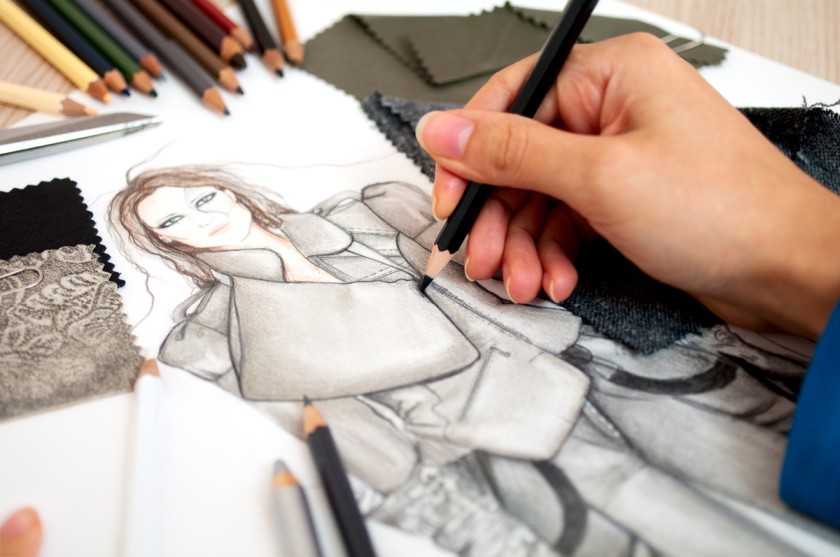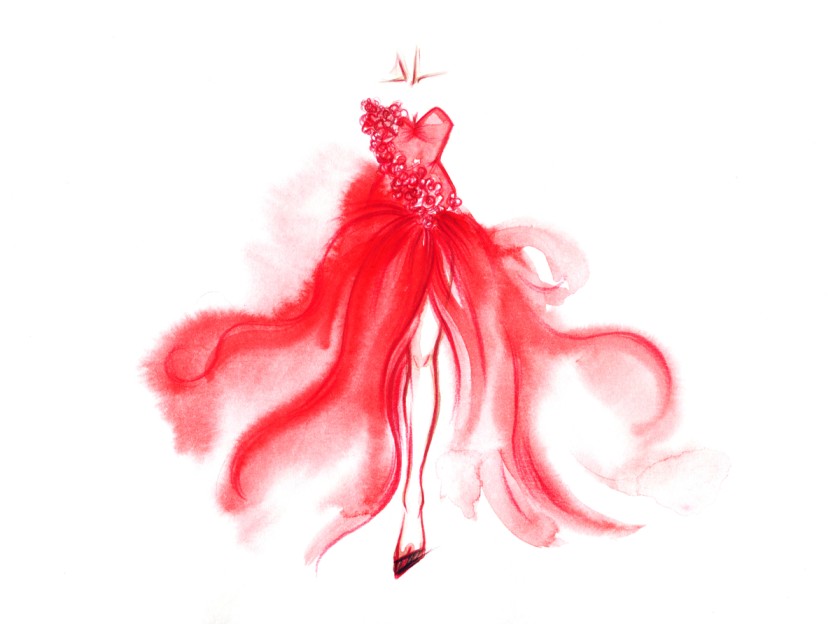How to Draft Your Own Patterns



Designing your patterns before beginning to sew is a common challenge. Every sewist or designer wishes to make their patterns. Patterns should always be exclusive, whether they are for commercial dress pattern designing or for small batches. Pattern drafting is a useful and essential skill. But where and how can you start?
Pattern drafting is all about designing a template or stencil. A designer needs a stencil or a prototype to execute an actual dress. In easy terms, a pattern acts as a blueprint of your design. Dress pattern designing saves time and also works as a reference. A sketch made by the designer will help in delivering the target shape of the dress. Fabric will be measured, cut, and sewed following the pre-cut design pattern. Various shapes cut for the design can be helpful while putting together the pieces and visualizing the dress.
Dress pattern designing is surely a difficult skill, but let's see how you can practice and make it perfect with our guide on how to draft your patterns.
Dress patterns
A template helps to sew a garment together. Dress patterns are made out of tissue, cardboard, card sheets and fit together to create the blueprint for the dress, quite similar to a jigsaw puzzle. Multiple pieces are made in a predetermined format, such as the body, sleeves, torso, legs, arms, etc. A few pieces also indicate if they are single or double parts.
Every single piece is given a number according to which they will be attached to get sewn together. Extra markings for zippers, buttons, and seam lines are used to add details to the pattern. Correct numbering is crucial as even if one piece goes wrong, you could ruin the whole dress.
Patterns could also include diagrams, instructions for special considerations, and written information on how one would go about making a complete outfit. Dresses come with two types of sewing patterns, one is commercial, and the other is self-drafted.
Commercial pattern
A commercial pattern will be available at most of the fabric outlets. These commercial designs are most suited for companies that sell their designs on a large scale. It is easy to mass produce with the use of these patterns; they are accompanied by proper instructions. Commercial patterns are tested first-hand to avoid accuracy issues. They are available in many sizes and complement the ongoing fashion trends. A commercial pattern has a recommended fabric type, which makes the final design all the more appealing.
Self-drafted pattern
If you are looking for self drafting your designs, you have the liberty to choose fabric and measurements as per your convenience. You need not restrict yourself to ongoing fashion trends. It is also cheaper to build your pattern than buy a ready-made one. You just need to buy the right tools, and before you launch the design, have a trial round to ensure the fit and finesse.
How to draft a pattern?

Dress pattern designing is crafting a paper plan for a garment. The first thing to start drafting your pattern is the design itself. Confirm the design for which you wish to create the template.
- Body measurement: Ensure the body measurements are precise. Body shapes and measurements play a crucial role in designing and drafting a pattern. Create a style appropriate to the body measurements.
- Sketch: A sketch of your design should be drawn to finalize the pattern of your design. The sketch should reflect the final piece you desire. Draw a sketch for both front and back. The flow and the cuts should reflect the length of the fabric to be used appropriately.
- Measurement marking: Place plain paper and mark measurements with the help of a ruler. This will align the pattern measurements on the paper.
- Use of lines: Use horizontal and vertical lines to give shape to the body parts. Horizontal lines are used for shoulders, bust, and hip lines, while vertical ones are used for the torso, legs, and arms.
- Numbering: Appropriate numbering of each cut piece will make sure which pattern should be sewn where. Mark them in the sequence of which comes first, i.e., start from the upper body parts; neck/collar moving on shoulder, body, and finishing with the lower body parts. Remember to number the pieces for front and back as well.
- Adding the seams: A good allowance from all sides can be useful when you stitch the garment. This gives a lot of room for the garment to work around. Seams also predetermine the amount of extra cloth that will be required for stitching.
- Cutting: Once the measurements have been defined, cut them appropriately. Ideally, cut two pieces for each—every piece should be considered for a back and front part.
Making Templates from Pre-existing Clothing
Drafting patterns from stencils for clothes is easier than creating templates from pre-stitched clothing. However, if you are a designer, you might know that if you like a dress and wish to recreate the pattern, you would have to use the dress as a stencil and draft a pattern. So how do you do that? The steps for making a template from an article of pre-existing clothing are:
- Fold your garment into vertical halves. The edges and seams should be properly aligned from both sides. Pin it to avoid shifting and incorrect measurements.
- Lay the garment on a piece of tracing paper, and make an accurate outline of the cloth with a chalk piece.
- Remove the clothing piece and re-mark with a bold marker. Remember to name these pieces such as body, arms, sleeves, etc.
- Follow the line-markings with the seam line for margin identifications. A seam line is usually drawn half an inch away from the actual line of measurement. Depending upon your body measurements, you can increase the seam lines.
- Cut out each pattern piece and add details such as zippers, buttons, and hooks. Mark body patterns for left and right if the design has only one shoulder or one sleeve.
Is drafting your pattern necessary?

Drafting a pattern is necessary for the following reasons:
Well fitted clothes
Getting a well-fitted garment is one of the most important reasons for creating a pattern. Commercial patterns come in handy but if you are a perfectionist, these designs won't do any good. As commercial dress pattern designing is done for mass production and average body sizes, these will not suit all designs.
Knowing your designs
Very rarely will a commercial pattern fit with perfect measurements. Knowing your draft pattern or making your patterns will help you understand the faults of the design.
Understanding how sewing works and how patterns are cut can help you alter a dress or make changes in the dress accordingly. If you do not have a pattern of your own, you might not be able to sew it with perfection.
Keeping a backup
Sometimes a required style or design cannot be found, or a particular trending design might return after a few years. In this scenario, you will have the patterns to yourself to remake them.
Learning a new skill
The skill of dress pattern designing helps you to master the skills for making new designs. Each draft pattern can be improvised and utilized for making new draft templates.
Conclusion
Fashion designers, merchandisers, buyers, fashion business owners can benefit immensely by drafting their design patterns. The patterns may be inclusive to their business and make them the pioneers of one or more than one type of clothing. For example, you might be a specialist in winter or summer wear. Fashion firms can also keep their drafted patterns for future references and use them to build designs on the previous draft patterns.
If you are looking for more ideas to start building your fashion designs, you must check out Fashinza, a one-stop fashion destination. Fashinza can assist you with sourcing and manufacturing while keeping you up to date on the latest styles and best practices.



















